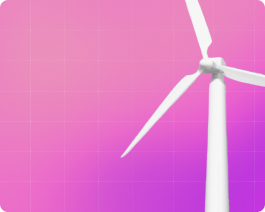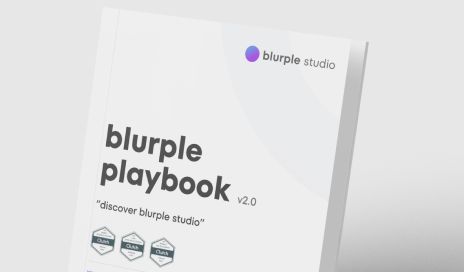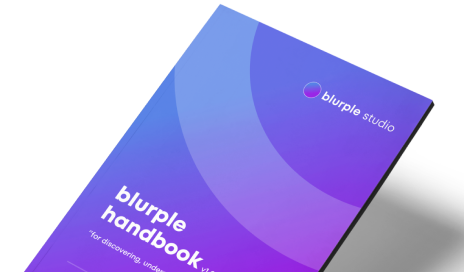How We Collaborate?
At Blurple, collaboration lies at the heart of everything we do. Our approach ensures seamless teamwork by combining transparency, mutual respect, and a shared vision for success. Whether partnering with agile startups or established enterprises, we adapt our methods to meet the unique needs of each client. Here’s how we make it happen:
Our Process to Start Collaborating
- Discovery Phase
- We begin by understanding the client’s needs, goals, and challenges. For startups, this often involves refining ideas and exploring market opportunities, while for enterprises, we focus on optimizing processes and aligning with existing strategies. This phase includes stakeholder interviews, competitor analysis, and user research to ensure we have a clear picture of the project’s scope.
- Proposal & Agreement
- Based on the insights gathered, we craft a tailored proposal outlining deliverables, timelines, and success metrics. For startups, this might include MVP development plans, while enterprises often require scalable solutions for existing products. Once both parties align, we finalize the agreement and kickstart the project.
- Kick-off Meeting
- We host a collaborative session with all stakeholders to define expectations, set priorities, and establish communication channels. Startups benefit from our hands-on guidance to accelerate progress, while enterprises leverage our expertise to bring fresh perspectives to their processes.
- Onboarding & Team Alignment
- Our team familiarizes itself with the client’s ecosystem, tools, and processes. Whether integrating into a startup’s lean operations or collaborating with cross-functional enterprise teams, we ensure seamless alignment from day one.
- Initial Roadmap & Milestones
- We develop a high-level roadmap, breaking down the project into clear, actionable milestones. For startups, this often focuses on rapid prototyping and iterative design, while enterprises require long-term plans with structured phases. This roadmap guides our efforts and provides transparency throughout the process.
Enhancing Collaboration with Our Onboarding Process
- We structure the entire project on Asana or Coda.io, where all tasks, assigned team members, estimated completion timelines, and task details are clearly defined. We invite our clients to this platform, creating a collaborative and transparent working environment.
- Our primary channel for quick daily communication with our internal team, clients, and partners is Slack. We onboard our clients to Slack at the start of the project.
- At the beginning of the project, we create a dedicated folder for our client in our Google Drive account and invite them to it. Throughout the project, all documents and deliverables are organized and stored in this folder.
- For official correspondence (e.g., financial matters, project deliveries), we use email. However, this accounts for less than 10% of our communication traffic, as most conversations and updates take place on Slack.
- Online meetings are conducted via Slack, Google Meet, or Zoom, depending on the client’s preference.
From the onboarding phase onward, all emerging topics are turned into tasks and consistently integrated into the project management dashboard in Asana or Coda, based on project decisions. By working in this way, we ensure an asynchronous, transparent, and collaborative working experience, making everything clear for all stakeholders. This commitment to clarity and transparency is one of our core principles.
How We Collaborate Throughout the Process
- Clear Communication
- We use structured channels like weekly stand-ups, retrospectives, and project briefs to ensure everyone is aligned.
- Defined Roles and Responsibilities
- Each team member knows their role, empowering them to take ownership while respecting others’ contributions.
- Feedback Culture
- Constructive feedback is a cornerstone of our process. We regularly exchange ideas to refine and improve our work.
- Cross-functional Teams
- Designers, researchers, and product managers work together to bridge the gap between user needs and business goals.
- Collaboration Tools
- From Figma to Slack, we leverage tools that enhance our collaboration and streamline our workflows.
By fostering this collaborative environment and following a structured start-up process, we adapt to the fast-paced demands of startups and the complexity of enterprises alike, ensuring creativity and innovation thrive in every project.








